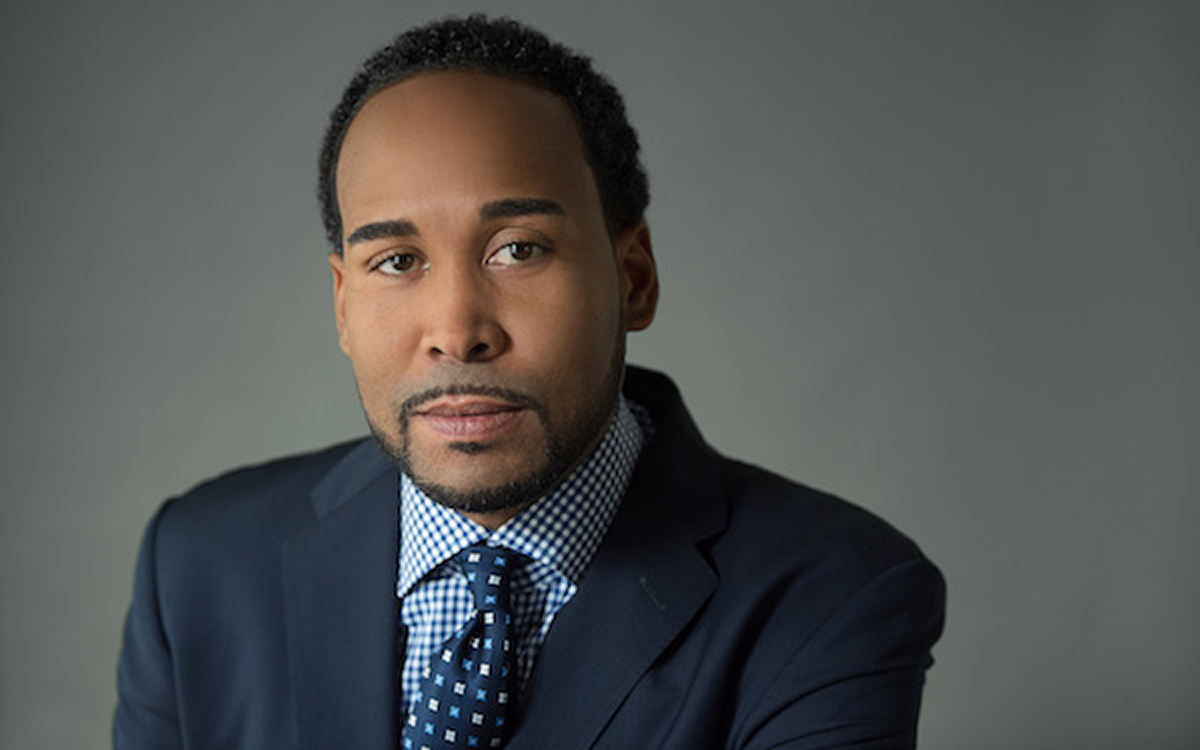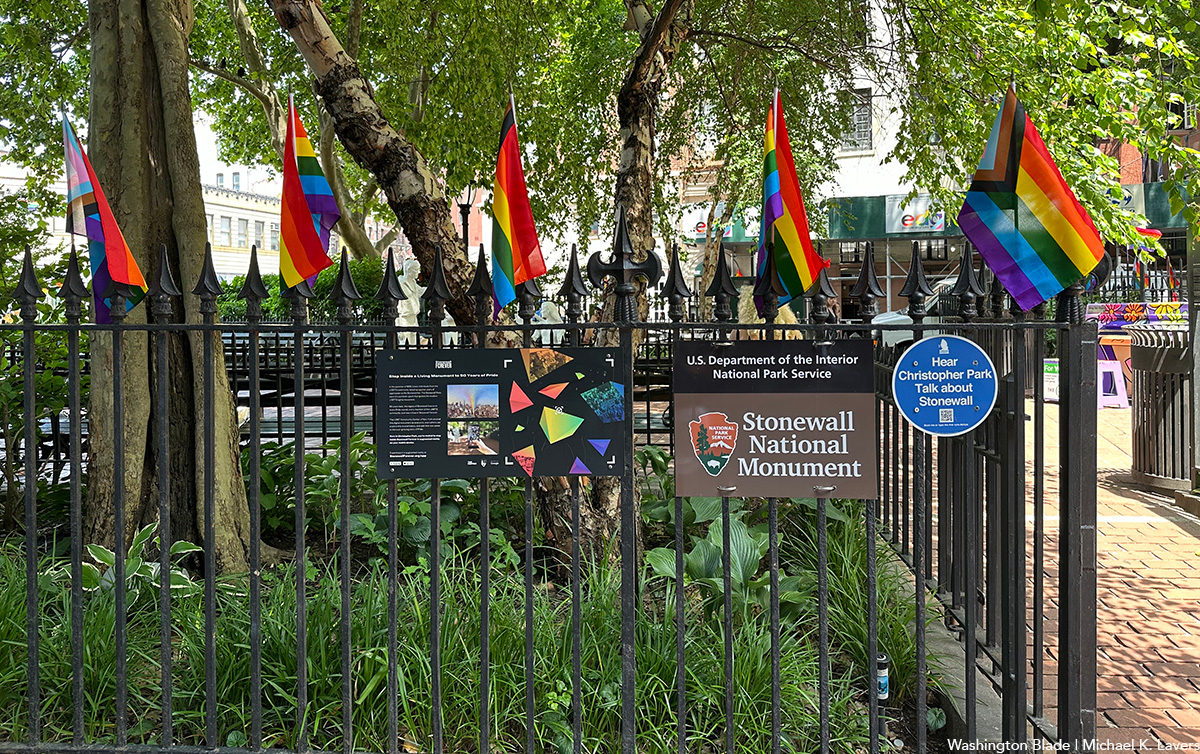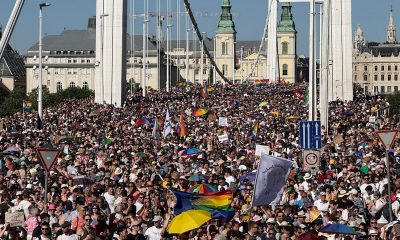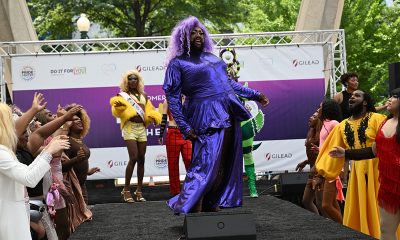National
Nat’l Coming Out Day presents unique challenges for communities of color
‘For some people, visibility equals greater danger’

On the 34th anniversary of National Coming Out Day, LGBTQ people across the country honor the community and its fight for equality. But not everyone sees coming out as a celebration.
“Coming out is not always the best option for persons of color who already — because of our pigment on top of our identity — face discrimination, hatred and violence,” said Kimberley Bush, executive director and director of Arts and Cultural Programs at the DC Center for the LGBT Community.
The first National Coming Out Day was in 1988. Psychologist Robert Eichberg and gay rights activist Jean O’Leary, both of whom were openly queer and white, created the holiday.
In the U.S., being queer — and what that might look like — often centers whiteness. For many, the term “coming out” continues to center whiteness as the norm for LGBTQ identities.
David Johns, executive director of the National Black Justice Coalition said, “usually the narrative and the images revolve around white folks that sit down with their families and have maybe an uncomfortable conversation, but at some point they celebrate them. Those folks move to gayborhoods like Hollywood, Calif., or Chelsea, N.Y., or Boystown, Chicago. And then they get to join associations around their LGBTQ+ identities that also give them access to forms of capital and privilege that most Black folks don’t get to benefit from.”
The cultural and historical myopia inherent in the term “coming out” can minimize the complicated relationship between pride, visibility, and safety for LGBTQ people within communities of color.
“It is often challenging to be heard, seen, and just simply listened to as a LGBTQ+ person, but when you add on being a person of color, that challenge becomes much more unique and saturated. We are inherently judged, not given credibility to our own life stories and further pushed into the margins and often cannot take or retain the power in the who, when, and how we disclose our identity,” Bush said.
When talking about coming out, Johns, who identifies as same gender loving (SGL), prefers the term “inviting in.”
“The process of inviting in is a term that we use to sort of shift power and highlight the problematic nature of coming out, while also acknowledging and sometimes celebrating,” Johns said.
“Inviting in” signifies that, “no one is entitled to information about the lived experiences of other people that are not voluntarily offered up.”
And “inviting in” reallocates the individual responsibility of “coming out” and challenges the heteronormative expectation that LGBTQ or SGL people should be required to “out” themselves.
The idea of “inviting in” instead of “coming out” for communities of color also intersects with very real safety concerns for many in the community, given the current political climate, the widespread escalation of anti-LGBTQ threats online and attacks on members of the community and providers of trans-affirming healthcare across the country.
“The fact that our lives are dynamic and we face moments, sometimes daily, where we’re forced to think about inviting people in and often have to consider safety, especially now in this current political environment, is often missed,” Johns said.
For people of color living at the intersection of multiple marginalized identities, “coming out” can be even more dangerous because of heightened safety issues specific to communities of color.
“Black and brown humans have always had to fight for our freedoms,” Bush said. “Coming out can be a pressured, intense, repressive and oppressive journey that may not allow a person to feel the freedom to choose inviting in versus coming out. In addition, persons of color also exponentially experience various levels of trauma. Coming out can be an extra layer of repetitive trauma and abuse.”
In LGBTQ communities of color, interpersonal and religious violence and parental or familial responses are some of the traumas community members can face.
A Williams Institute study about parental acceptance of LGBTQ identities across different age groups found that parents gave invalidating responses to their child’s sexual identity across all age groups, and parents of children in younger age groups referred to coming out as “just a phase” or something the child was “too young to know about.”
Religion is often used to invalidate marginalized sexual and gender identities in communities of color.
Dr. Sydney Lewis, a lecturer in the Harriet Tubman Department of Women, Gender, and Sexuality Studies at the University of Maryland, College Park, attributes this negative religious response to Christianity.
“Many Christian churches have a history of being homophobic and transphobic,” Lewis said. “And I think that our reliance on Black Christianity for our community, our safety and our growth and development, has been detrimental to LGBTQ folks of color, specifically Black folks.”
Religious homophobia and transphobia complicate the coming out narrative for many queer people. Elle Moxley, a Black trans woman and founder and executive director of the Marsha P. Johnson Institute, has experienced the harms of religious homophobia and transphobia firsthand.
“I didn’t necessarily, as a Black person, feel comfortable coming out or aligning with any rhetoric around that because a lot of times people are forced out,” Moxley said. “In my experience, growing up as a child in the COGIC (Church of God in Christ) religion, there wasn’t an invitation to come out. I was forced out at 12 years old.”
While queer people have always existed, there is an intentional erasure of gay, trans, and non-binary people within Christianity that stems from colonialism.
The visibility of queer sexuality in Black culture can be traced back to the Harlem Renaissance, where literature and music were full of stories about lived queer experiences. And non-binary identities have always been visible and integrated in some communities of color like in North American Indigenous cultures and Pacific Island cultures. Terms like “fa’afafine” in Samoa and “māhū” in Hawai’i are used to signify that someone identifies as non-binary (or “third gender”).
In LGBTQ communities today, the idea that “coming out” means being more free to openly be yourself in public often elides the very real danger of visibility in trans lives of color.
“There’s this idea that visibility somehow equals greater freedom, but for some people, visibility equals greater danger,” Lewis said.
The Human Rights Campaign reports that 31 trans people have been killed so far this year, while a Williams Institute study found that transgender people are four times more likely than cisgender people to be victims of violent crime.
On a day like National Coming Out Day, which is thought to not only symbolize pride but also inclusion, people like Elle Moxley are asking not for inclusion, but equity.
“I always say that inclusion is something that happened after the fact. I don’t subscribe to that,” Moxley said. “But what I do subscribe to is that reparations are an essential part to how equity in society happens.”
People like David Johns are also calling attention to how complicated a celebration like National Coming Out Day can be for LGBTQ communities of color.
“For the Black trans woman with a disability in Jackson, Miss., or my parents’ state of Texas, given the position that those governors have them in, it probably is not safe for them to come out even on a day we’re raising awareness as a part of a goal,” Johns said.
(Editor’s note: This story is part of a new Blade Foundation initiative focusing on the intersection between race and LGBTQ identities. It is funded by a grant from the Leonard-Litz Foundation.)
U.S. Supreme Court
Supreme Court to consider bans on trans athletes in school sports
27 states have passed laws limiting participation in athletics programs

The U.S. Supreme Court on Thursday agreed to hear two cases involving transgender youth challenging bans prohibiting them from participating in school sports.
In Little v. Hecox, plaintiffs represented by the ACLU, Legal Voice, and the law firm Cooley are challenging Idaho’s 2020 ban, which requires sex testing to adjudicate questions of an athlete’s eligibility.
The 9th U.S. Circuit Court of Appeals described the process in a 2023 decision halting the policy’s enforcement pending an outcome in the litigation. The “sex dispute verification process, whereby any individual can ‘dispute’ the sex of any female student athlete in the state of Idaho,” the court wrote, would “require her to undergo intrusive medical procedures to verify her sex, including gynecological exams.”
In West Virginia v. B.P.J., Lambda Legal, the ACLU, the ACLU of West Virginia, and Cooley are representing a trans middle school student challenging the Mountain State’s 2021 ban on trans athletes.
The plaintiff was participating in cross country when the law was passed, taking puberty blockers that would have significantly reduced the chances that she could have a physiological advantage over cisgender peers.
“Like any other educational program, school athletic programs should be accessible for everyone regardless of their sex or transgender status,” said Joshua Block, senior counsel for the ACLU’s LGBTQ and HIV Project. “Trans kids play sports for the same reasons their peers do — to learn perseverance, dedication, teamwork, and to simply have fun with their friends,” Block said.
He added, “Categorically excluding kids from school sports just because they are transgender will only make our schools less safe and more hurtful places for all youth. We believe the lower courts were right to block these discriminatory laws, and we will continue to defend the freedom of all kids to play.”
“Our client just wants to play sports with her friends and peers,” said Lambda Legal Senior Counsel Tara Borelli. “Everyone understands the value of participating in team athletics, for fitness, leadership, socialization, and myriad other benefits.”
Borelli continued, “The U.S. Court of Appeals for the Fourth Circuit last April issued a thoughtful and thorough ruling allowing B.P.J. to continue participating in track events. That well-reasoned decision should stand the test of time, and we stand ready to defend it.”
Shortly after taking control of both legislative chambers, Republican members of Congress tried — unsuccessfully — to pass a national ban like those now enforced in 27 states since 2020.
Federal Government
UPenn erases Lia Thomas’s records as part of settlement with White House
University agreed to ban trans women from women’s sports teams

In a settlement with the Trump-Vance administration announced on Tuesday, the University of Pennsylvania will ban transgender athletes from competing and erase swimming records set by transgender former student Lia Thomas.
The U.S. Department of Education’s Office for Civil Rights found the university in violation of Title IX, the federal rights law barring sex based discrimination in educational institutions, by “permitting males to compete in women’s intercollegiate athletics and to occupy women-only intimate facilities.”
The statement issued by University of Pennsylvania President J. Larry Jameson highlighted how the law’s interpretation was changed substantially under President Donald Trump’s second term.
“The Department of Education OCR investigated the participation of one transgender athlete on the women’s swimming team three years ago, during the 2021-2022 swim season,” he wrote. “At that time, Penn was in compliance with NCAA eligibility rules and Title IX as then interpreted.”
Jameson continued, “Penn has always followed — and continues to follow — Title IX and the applicable policy of the NCAA regarding transgender athletes. NCAA eligibility rules changed in February 2025 with Executive Orders 14168 and 14201 and Penn will continue to adhere to these new rules.”
Writing that “we acknowledge that some student-athletes were disadvantaged by these rules” in place while Thomas was allowed to compete, the university president added, “We recognize this and will apologize to those who experienced a competitive disadvantage or experienced anxiety because of the policies in effect at the time.”
“Today’s resolution agreement with UPenn is yet another example of the Trump effect in action,” Education Secretary Linda McMahon said in a statement. “Thanks to the leadership of President Trump, UPenn has agreed both to apologize for its past Title IX violations and to ensure that women’s sports are protected at the university for future generations of female athletes.”
Under former President Joe Biden, the department’s Office of Civil Rights sought to protect against anti-LGBTQ discrimination in education, bringing investigations and enforcement actions in cases where school officials might, for example, require trans students to use restrooms and facilities consistent with their birth sex or fail to respond to peer harassment over their gender identity.
Much of the legal reasoning behind the Biden-Harris administration’s positions extended from the 2020 U.S. Supreme Court case Bostock v. Clayton County, which found that sex-based discrimination includes that which is based on sexual orientation or gender identity under Title VII rules covering employment practices.
The Trump-Vance administration last week put the state of California on notice that its trans athlete policies were, or once were, in violation of Title IX, which comes amid the ongoing battle with Maine over the same issue.
New York
Two teens shot steps from Stonewall Inn after NYC Pride parade
One of the victims remains in critical condition

On Sunday night, following the annual NYC Pride March, two girls were shot in Sheridan Square, feet away from the historic Stonewall Inn.
According to an NYPD report, the two girls, aged 16 and 17, were shot around 10:15 p.m. as Pride festivities began to wind down. The 16-year-old was struck in the head and, according to police sources, is said to be in critical condition, while the 17-year-old was said to be in stable condition.
The Washington Blade confirmed with the NYPD the details from the police reports and learned no arrests had been made as of noon Monday.
The shooting took place in the Greenwich Village neighborhood of Manhattan, mere feet away from the most famous gay bar in the city — if not the world — the Stonewall Inn. Earlier that day, hundreds of thousands of people marched down Christopher Street to celebrate 55 years of LGBTQ people standing up for their rights.
In June 1969, after police raided the Stonewall Inn, members of the LGBTQ community pushed back, sparking what became known as the Stonewall riots. Over the course of two days, LGBTQ New Yorkers protested the discriminatory policing of queer spaces across the city and mobilized to speak out — and throw bottles if need be — at officers attempting to suppress their existence.
The following year, LGBTQ people returned to the Stonewall Inn and marched through the same streets where queer New Yorkers had been arrested, marking the first “Gay Pride March” in history and declaring that LGBTQ people were not going anywhere.
New York State Assemblywoman Deborah Glick, whose district includes Greenwich Village, took to social media to comment on the shooting.
“After decades of peaceful Pride celebrations — this year gun fire and two people shot near the Stonewall Inn is a reminder that gun violence is everywhere,” the lesbian lawmaker said on X. “Guns are a problem despite the NRA BS.”














